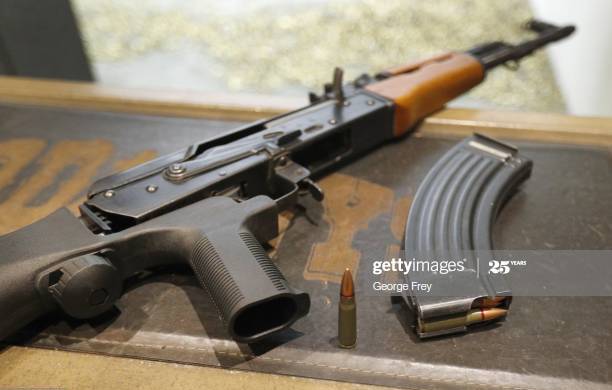
About 857 million of world’s firearms are in civilian hands-KAIPTC Researcher
An estimated 857 million firearms are in the hands of civilians, as Mrs. Margaret Akakpo, a Researcher at the Faculty of Academic Affairs and Research at the Kofi Annan International Peacekeeping Training Centre (KAIPTC), has stated.
Mrs. Akakpo said the figure represented two-thirds of the world’s total firearms of one billion, adding that while over 133 were for the military, 22.7 million were being controlled by other law enforcement agencies.
Mrs. Akakpo stated this at the fifth Maritime Security and Transnational Organized Crime (MSRTOC) course organized by the Kofi Annan International Peacekeeping Training (KAIPTC) Course with sponsorship from the German Government.
She said about eight million of the small arms were in West Africa, leading to a legacy of regional security complexes.
She indicated that the United Nations (UN) and the Economic Community of West Africa (ECOWAS) defined small arms as weapons used by individuals, while light weapons were used by two or more people, a pack animal, or a light vehicle.
She said revolvers and self-loading pistols, rifles and carbines, submachine guns, assault rifles, and light machine guns were some of the examples of small arms.
She said light weapons, on the other hand, were heavy machine guns, hand-held, under-barrel, and mounted grenade launchers, portable anti-aircraft guns and recoilless rifles, portable anti-tank missiles and rocket systems, portable launchers of anti-aircraft missile systems, and mortars of calibres less than 100mm.
Mrs. Akakpo noted that small arms were easily being trafficked due to their low cost, durability, and easy-to-use nature, adding that they were also easy to transport, had large producers, and had legitimate police and civilian usage.
She said some of the routes for trafficking the arms were air, land, and water bodies, as well as illegal border routes and fake compartments of vehicles, containers, and trucks, mostly practised by nomadic groups dominating the trade in the Sahara, among others.
She stated that such trafficked arms served as a nexus for piracy, human trafficking, drug trafficking, terrorism, illegal oil bunkering, money laundering, and wildlife poaching.
Touching on the effect of small arms and light weapons, she said their proliferation and misuse contributed to inequality between women and men and to gender-based violence and therefore called for a gender-sensitive approach in addressing the gaps in their management.
She said some of the consequences of trafficking arms were injuries and deaths, protracted conflicts, intensification of community conflict over scarce resources, serving as an obstacle to human development, rendering humanitarian intervention difficult, and increasing maritime security issues.
The KAIPTC researcher suggested that to properly fight arms trafficking and its effects, there must be improved national regulations and a harmonization of legislation at the regional level while strengthening stockpile management.
Other measures recommended were the improvement of cross-border controls, arms collection activities, destruction operations, and the development of responsible arms management.
Programmes, and having an improved licensing regime, deeper interagency cooperation and collaboration across the sub-region, capacity building and strengthening of early warning and response mechanisms, and many others.


